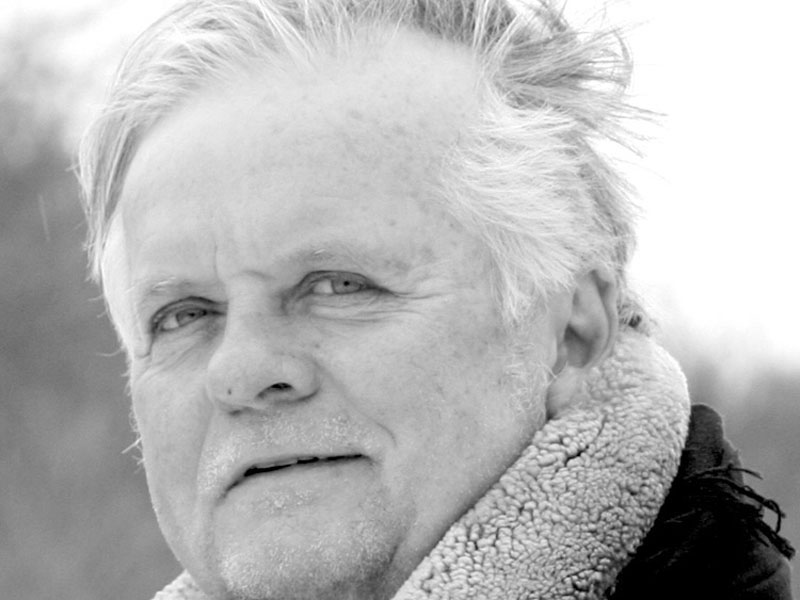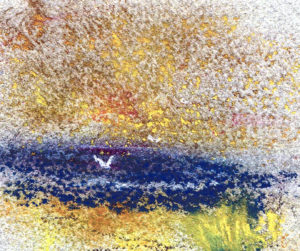Columnists
Pannes, Antlions and the Bonaparte Gull

The sun is undecided this morning, playing the same tune as I am; more likely the other way around. Dawn, especially as I welcome it in these months of living mostly out-of-doors, camp style is a meditative balm. The raven’s call, its shunted yelp that seems higher than a musical middle C note is an added voice to this corner of the island. I mostly associate the raven with the tamarack tree, wild blueberries and the Northern shield; not so much as being down here on the limestone flats.
And the local hummingbird came by my window, maybe attracted to the scent of my first coffee as I stirred it while still in a sleep zone by the screened opening. The heavy sky and rains that crossed the valley, in late afternoon of yesterday, washed down the watershed and when the shroud of clouds opened, a smack of lake air sauntered up the ravine from Pleasant Bay. All of it launched me onto my bike.
Walking or cycling are true ways to reveal the big and small details of an environment. In my proximity I have come to be more familiar with land formations; to distinguish ancient characteristics that long predated human settlement. What I feel as I move through the landforms is what I imagine to be the things that attracted prehistoric civilizations. Archaeology has long proven the existence of ancient villages which would have neighboured the place I call home today; Former settlements that housed populations greater than any that this intersection of creek and road has had since the arrival of foreign populations that named the places we recognize today.
 Pleasant Bay has historically been a confluence of bird migration; following upstream on what was a navigable waterway in pre-historic times, early inhabitants would move from shore to inland as the seasons changed. To the west of my window is an extended plateau where forests provided shelter and game, sources of heat, flatland worked for the planting of corn and beans and squash: Somehow I contemplate these things almost daily; always in appreciation, of reverence to the land that holds us.
Pleasant Bay has historically been a confluence of bird migration; following upstream on what was a navigable waterway in pre-historic times, early inhabitants would move from shore to inland as the seasons changed. To the west of my window is an extended plateau where forests provided shelter and game, sources of heat, flatland worked for the planting of corn and beans and squash: Somehow I contemplate these things almost daily; always in appreciation, of reverence to the land that holds us.
Recent regular bike trips along the North Beach Road have shown nuances of that stretch of territory; a once community of farming and seafaring with shipbuilding and keepers of the Scotch Bonnet Light are part of its legend. Today the fields of mustardcoloured hay roll down to the water’s edge. I have lingered in almost forgotten, hidden away cemeteries that are on the rise of land that looks over the water. Here are the testimonies, marble and granite headstones that bear witness to the many that once, when they lived, gathered here in the clearings, in the fields and in woods to stand in silent prayer, speaking to the souls of loved ones that lay hushed beneath now craggy markers of hope.
Often toward sunset this summer I have gone to the landscape of North Beach and its North Bay lagoon; home to invertebrates that in turn provide food for fish and frogs, turtles and waterfowl. I have watched the larval antlions wait in their dollar-size pits for ants and other small insects to fall in their trap.
These globally rare wetlands—pannes—are in the low-lying areas of sand dune habitat; flooded early year I watch as they dry up in summer and yield a garden of wildflowers. The Marram grass is iconic in this large system of baymouth sandbars—glacier deposited sand across the mouths of bays—that extend along Lake Ontario from Sandbanks to Weller’s Bay. The grasses trap blowing sand as nature’s tool to develop dunes that in turn become home to the eastern kingbird, sandpipers and black-bellied plovers.
Among the gulls, I like to spot the black headed Bonaparte gull mainly for its conjuring of the infamous 19th century ‘little emperor’ of France. It was in fact his nephew, the ornithologist Charles Lucien Bonaparte who named the gull during his eight years spent in North America.
I now stand beside my bike as the wash of sky meets water and defies the bloom of sunset. I refer to these moments as Turner skies after the 19th century English painter. The Park employee has just waved to me and driven by on his rounds; it’s near park closing time and with the promise of morning I will return; The music and breath of the lake, all of it parts of the place we know; All of it to carry home tucked into my grab bag of memory.

Comments (0)